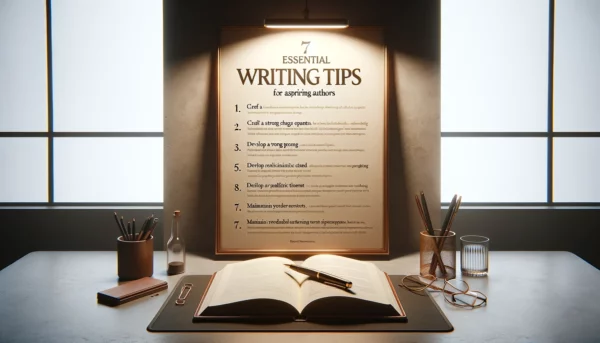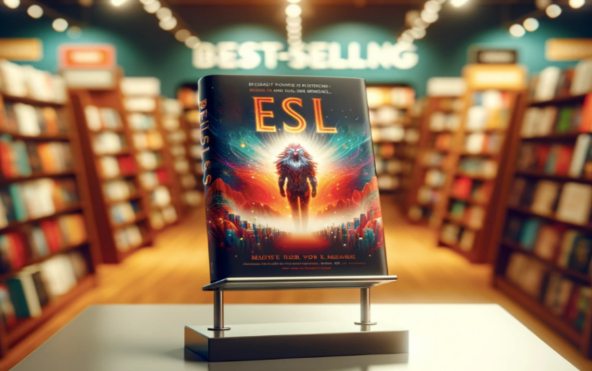Ever wondered why some stories feel more intimate, as if the characters are confiding directly in you? Enter the epistolary novel—a narrative told through letters, diary entries, and other documents that pull readers right into the characters’ personal lives. This form, which spans centuries from Pamela in the 1700s to the heartwarming The Guernsey Literary and Potato Peel Pie Society, has a timeless charm that keeps readers engaged, page by page. With epistolary novels, you’re not just reading a story; you’re a confidant to the characters’ most private thoughts, a role that’s as enchanting as it is immersive. Reflect on your own favorite epistolary novels and share your thoughts in the comments.
What is an Epistolary Novel?
An epistolary novel is a unique form of storytelling where the narrative unfolds through letters, diary entries, or other documents. This literary device allows authors to create a deeply personal and immersive experience, often blurring the lines between reality and fiction. By presenting the story through the characters’ own words, the epistolary form offers a direct window into their thoughts, emotions, and perspectives.
The term “epistolary” comes from the Latin word “epistola,” meaning a letter. This form of fiction has been used for centuries, with roots tracing back to ancient Greece and Rome. The epistolary novel can take various forms, including traditional letters, diary entries, newspaper articles, and even modern electronic communications like emails and text messages. This versatility allows authors to experiment with different narrative styles and structures, adding greater realism and depth to their stories.
One of the key advantages of the epistolary form is its ability to present multiple points of view without relying on an omniscient narrator. This can create a rich, multi-faceted narrative that engages readers on a deeper level. Whether it’s the intimate confessions of a diary entry or the formal tone of a newspaper article, each document type brings its own unique flavor to the story.
The Evolution of the Epistolary Novel: From Early Letters to Modern Messages
The epistolary format has deep roots, tracing back to Samuel Richardson’s Pamela, often considered the first epistolary novel in English. Richardson’s work opened doors for other authors to explore this form, giving readers the thrill of discovering stories through characters’ personal writings. This unique style also flourished in works like Dangerous Liaisons, Lady Susan by Jane Austen, and later, the World War-era Letters of 84, Charing Cross Road. Each of these texts paved the way for more modern interpretations of the form, as seen in The Color Purple. Bridget Jones’s Diary is a modern example of the epistolary novel, with its diary-style entries recounting the humorous misadventures of a thirty-something woman seeking love in ’90s London, impacting the genre significantly. Just as the novel has evolved, so has our way of communicating. Today, epistolary novels may include emails, texts, or even tweets, showing the form’s adaptability to new media and new eras.
Your Publishing Journey Awaits – Start NowWhy Letters? The Allure and Challenges of the Epistolary Format
Letters, journal entries, and diary entries create a unique narrative structure that sets epistolary novels apart. They allow for direct insight into characters’ minds, revealing raw emotions and unfiltered thoughts. This format requires the reader to piece together the story from multiple perspectives, adding a layer of complexity and engagement. But while the style brings characters closer to readers, it also presents challenges. Authors must ensure coherence despite fragmented storytelling, maintain unique voices for each character, and make every “letter” feel authentic.
Famed authors like Alice Walker and Helene Hanff succeeded in this, creating unforgettable works that feel like intimate conversations. The trick lies in making each document serve a purpose—whether it’s a fan letter, a declaration of love, or a diary entry revealing a character’s deepest fears. The Screwtape Letters by C.S. Lewis and 84, Charing Cross Road are perfect examples, showcasing how letters can reveal hidden depths and drive a narrative forward.
Creating Authentic Voices: Writing Letters That Sound Real
One of the hallmarks of a successful epistolary novel is voice. Each letter or diary entry must feel genuine as if written by a real person. That’s no small feat when characters span ages, backgrounds, and motivations. Consider the young, naive protagonist of Daddy-Long-Legs by Jean Webster, whose letters are filled with wonder and growth, or the blunt yet humorous tone of Dear Committee Members, which captures an academic’s dry wit.
Crafting these voices involves a careful balance of character development and narrative style. The writer must capture each character’s distinct personality while ensuring the overall story remains cohesive. For aspiring authors, this is where platforms like Spines come into play. With a combination of AI-driven editing and real human expertise, Spines helps refine every character’s voice, ensuring consistency without sacrificing authenticity. After all, a story is only as compelling as the characters within it—and their letters must resonate as true.
Examples of Epistolary Novels and Their Impact
If you’re new to epistolary novels, consider starting with a few standout classics. The Guernsey Literary and Potato Peel Pie Society paints a vivid picture of life under the German occupation through a series of letters, combining resilience with romance. Meanwhile, Last Christmas in Paris explores a love story set against the backdrop of World War I, showing how distance can deepen relationships through words alone. Other favorites include Ella Minnow Pea, where letters and language itself become part of the plot, and Where Rainbows End, which captures a lifelong friendship through emails and notes.
These novels are more than just stories—they’re experiences, inviting readers to immerse themselves in the world of letter writing. Each entry reveals new facets of the characters, building suspense and intimacy in a way few other formats can. This makes epistolary novels a rewarding choice for readers seeking connection and depth. And for writers, they offer a unique opportunity to explore different forms of narrative and expression.
Crafting an Epistolary Novel
Crafting an epistolary novel requires a unique approach to storytelling. Since the narrative unfolds through a series of letters, diary entries, or other documents, the writer must carefully consider the voice, tone, and perspective of each character. Often, characters write letters to maintain relationships, conveying emotions and dynamics across distances. This format allows for a deeply personal and immersive experience, as readers gain direct access to the character’s innermost thoughts and emotions. However, it also demands meticulous attention to detail to ensure each character’s voice is distinct and authentic.
Choosing the Right Format
When embarking on an epistolary novel, one of the first decisions an author must make is choosing the right format to convey their story. This choice will significantly impact the tone, pacing, and overall structure of the novel. The format can range from personal letters and diary entries to newspaper articles and other public documents, each offering a different lens through which the story is told.
For instance, letters written between characters can create a sense of intimacy and immediacy, allowing readers to feel as though they are eavesdropping on private conversations. This format is ideal for exploring personal relationships and emotional depth. On the other hand, diary entries provide a more introspective look into a character’s inner world, capturing their private thoughts and reactions in real time.
Newspaper articles and other public documents can add a layer of objectivity and context to the narrative, grounding the story in a specific time and place. These formats are particularly effective in historical epistolary novels or stories involving larger public events. They offer a broader perspective that contrasts with the personal narratives, adding depth and realism to the plot.
In addition to selecting the right format, authors must also consider the tone and voice of their characters. The epistolary form allows for multiple voices and perspectives, which can enrich the story but also pose a challenge in maintaining consistency and coherence. Each character’s writing style should reflect their personality, background, and relationship with the recipient, creating a diverse and dynamic narrative tapestry.
Tips for Aspiring Epistolary Writers: Making Letter Writing Work for Your Story
So, you’re inspired to try your hand at an epistolary novel? Here are some tips to get you started:
- Define Your Characters’ Voices Early: Give each character a distinct style. A romantic might use flowery language, while a skeptic keeps it short and to the point.
- Use Letters to Reveal Key Plot Points: Each entry should drive the story forward, offering insight into character motivations or uncovering secrets.
- Balance Intimacy with Plot: Letters are personal, but they need to serve the story. Avoid entries that feel like filler, focusing instead on ones that add value.
Publishing an epistolary novel can feel daunting, but Spines makes it accessible. With AI-driven tools for formatting and a streamlined distribution process, you’ll find it easier to bring your story to readers around the world. From cover design to global distribution, Spines offers everything you need to share your unique narrative—whether you’re writing about star-crossed lovers, an epic friendship, or a mysterious stranger.
Diving deeper into the format of your Epistolary Novel
1. Define the Purpose of Each Document Type:
Consider what each format will contribute to the story. Diary entries are perfect for capturing a character’s private thoughts and immediate reactions, pulling readers into their personal world. Use them when you want to create a sense of intimacy and immediacy as if readers are getting a peek into the character’s unfiltered thoughts. Personal narratives are crucial for telling your own story, bridging gaps in communication, and fostering deeper connections.
Technique: Write in the first-person perspective, focusing on details that reveal character traits and emotional states. For example, if your character is anxious, short, fragmented sentences in their diary entry can mirror their racing thoughts.
2. Set the Tone with Letters and Correspondence:
Letters can convey a range of tones, from formal to deeply personal, depending on the relationship between the characters. Use letters to show the dynamics between characters and how they choose to present themselves to others. Letters also lend themselves to revealing secrets or uncovering tension, as characters might reveal things in writing that they wouldn’t say aloud. Love letters can be used to explore themes of loss and companionship, providing emotional depth to the narrative.
Technique: Develop distinct voices for each character’s letters by tailoring vocabulary and writing style to reflect their personalities. A love letter might be filled with poetic language, while a businesslike character might use clipped sentences and formal phrases. This variation will help readers instantly recognize who’s “speaking.”
Add Context with Newspaper Clippings, Diary Entries, or Public Documents:
Incorporating newspaper articles, reports, or other official documents can ground your story in a specific setting or time period. These entries are especially effective for historical epistolary novels or stories involving larger public events. They offer an objective view that contrasts with the characters’ personal narratives, adding depth and realism to the plot.
Technique: Use these documents sparingly to avoid interrupting the narrative flow. A well-placed news clipping can offer a broader perspective on events or add authenticity to the storyline without overwhelming the main narrative.
4. Combine Formats for a Layered Narrative:
Mixing different formats, such as letters, diary entries, and news articles, creates a multi-dimensional view of your story’s world. This technique allows readers to experience the plot from various angles, deepening their connection to the characters and events. Writing letters can create intimacy and depth in storytelling, allowing for the exploration of personal struggles, friendships, and historical contexts.
Technique: Start with diary entries to introduce the protagonist’s perspective, then gradually add letters from other characters to reveal new facets of the story. Sprinkle in public documents at key moments to shift focus outward and build suspense or historical context.
By thoughtfully selecting and blending document types, you can craft an engaging and nuanced epistolary novel that resonates with readers on multiple levels.
Epistolary Novels—Timeless, Personal, and Unforgettable
Epistolary novels remind us of the power of words—how a simple letter can reveal love, hope, despair, or courage. In a world full of instant messages, there’s something magical about letters that endure across time, binding readers and characters in a way that transcends the typical narrative form. If you’re considering publishing an epistolary story, Spines is your ideal partner, combining advanced technology with personalized support to turn your manuscript into a polished, published work.
Ready to put pen to paper—or fingers to keyboard—and share your story with the world? Spines are here to make it happen, one letter at a time.
Creating Distinct Voices
One of the key challenges of writing an epistolary novel is creating distinct voices for each character. This can be achieved by paying close attention to the language, tone, and style of each character’s writing. For example, a character who is well-educated and formal may use complex vocabulary and sentence structures, while a character who is less educated may use simpler language and shorter sentences. Consider the varied voices in The Enchanted Chocolate Pot, where the characters’ letters reflect their unique personalities and backgrounds. By tailoring the writing style to each character, you can create a rich tapestry of voices that bring your story to life.
Using the Format to Advance the Plot
The epistolary format can also be used to advance the plot in creative ways. For example, a character may write a letter that reveals a crucial piece of information, or a diary entry may hint at a character’s motivations or backstory. The writer can also use the format to create suspense or tension, by withholding information or using cliffhangers to keep the reader engaged. In Dear Committee Members, the protagonist’s letters gradually unveil his personal and professional struggles, adding depth and intrigue to the narrative. By strategically placing key revelations in letters or diary entries, you can keep readers hooked and eager to uncover the next piece of the puzzle.
Famous Examples of Epistolary Novels
Epistolary novels have been a popular form of storytelling for centuries. Some famous examples include:
- “The Tenant of Wildfell Hall” by Anne Brontë: This novel tells the story of a mysterious woman and her past through a series of letters and diary entries. The epistolary format allows readers to piece together the protagonist’s history and understand her motivations.
- “Dracula” by Bram Stoker: Using letters, diary entries, and newspaper articles, Stoker weaves a chilling tale of a vampire’s rise to power. The varied documents provide multiple perspectives, enhancing the suspense and horror.
- “The Guernsey Literary and Potato Peel Pie Society” by Mary Ann Shaffer: This heartwarming novel explores the experiences of a writer who forms a connection with a group of islanders who created a book club during the German occupation of Guernsey. Through their letters, readers gain insight into the characters’ resilience and camaraderie.
These novels demonstrate the versatility and emotional depth that the epistolary format can bring to a story. By immersing readers in the characters’ personal writings, these books create a powerful sense of intimacy and connection.
Overcoming Common Challenges
While the epistolary format can be a powerful tool for storytelling, it also presents some unique challenges. One common challenge is creating a cohesive narrative voice, as the writer must balance the different voices and perspectives of the characters. Another challenge is pacing, as the writer must carefully consider the timing and spacing of the letters or diary entries to create a sense of tension or suspense.
Despite these challenges, many writers have found success with the epistolary format. With careful planning and attention to detail, it is possible to create a compelling and engaging epistolary novel that draws the reader in and refuses to let go. By focusing on distinct character voices, strategically advancing the plot, and maintaining a balanced narrative, you can overcome these challenges and craft a memorable story that resonates with readers.
Epistolary novels offer a unique and innovative way to tell a story, blending personal and objective perspectives through letters, diary entries, and other documents. This format allows authors to create a deeply immersive and intimate reading experience, drawing readers into the character’s innermost thoughts and emotions.
Whether you’re a fan of classic epistolary novels like Dracula and The Tenant of Wildfell Hall, or modern favorites like The Guernsey Literary and Potato Peel Pie Society and The Perks of Being a Wallflower, there’s no denying the enduring appeal of this literary device. The epistolary form’s ability to present multiple voices and perspectives adds depth and complexity to the narrative, making it a powerful tool for storytelling.
FAQs – Writing Epistolary Novels
What exactly is an epistolary novel?
An epistolary novel is a type of story told through a collection of written documents such as letters, diary entries, emails, or other personal writings created by the characters themselves. This unique narrative style allows readers to experience the story from the characters’ own perspectives, making the reading experience more intimate and immersive than traditional third-person storytelling.
Why do authors choose the epistolary format?
Authors often choose the epistolary format because it enables them to present multiple viewpoints and inner thoughts without needing an all-knowing narrator. It creates a sense of authenticity and closeness, as readers feel like they are directly reading the characters’ personal communications, making the story emotionally engaging and often more relatable.
How has the epistolary novel evolved over time?
The epistolary novel has evolved from early handwritten letters featured in 18th-century works like Samuel Richardson’s Pamela to modern-day stories that incorporate emails, text messages, and social media posts. This evolution reflects changes in how people communicate, allowing authors to adapt the form to contemporary settings while preserving its core appeal of personal, fragmented storytelling.
What types of documents can be used in epistolary novels?
Besides traditional letters and diary entries, epistolary novels can include emails, text messages, newspaper clippings, official reports, or even social media posts. Each document type offers a different tone and perspective, which authors can use creatively to add realism, deepen the plot, or provide contrasting viewpoints within the story.
Are epistolary novels only suitable for historical or romantic stories?
Not at all. While many famous epistolary novels are historical or romantic, the format is highly versatile and can be applied to many genres, including mystery, horror, comedy, and contemporary fiction. The personal, direct nature of letters and diaries lends itself well to exploring a wide range of emotional and narrative themes.








